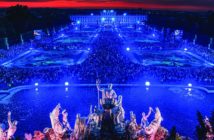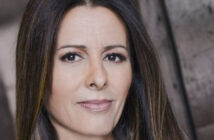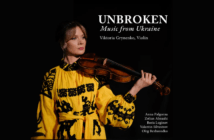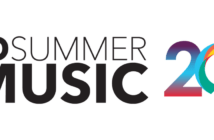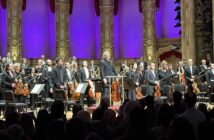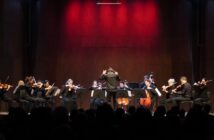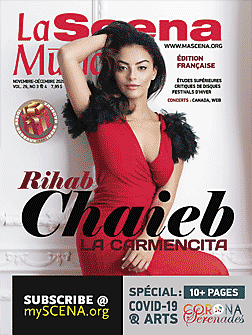
This page is also available in / Cette page est également disponible en:
![]() Francais (French)
Francais (French)
A new column of fascinating but little-known musical trivia collected by Robert Markow, formerly a horn player in the Montreal Symphony Orchestra, now a music critic, journalist and program annotator.
… there was more than one Franz Schubert?
The “other” one was born just 11 years after the famous one, in Dresden, and is often referred to as “François” to distinguish him from his far more famous namesake. François lives on almost exclusively through a little salon piece for violin and piano called L’Abeille (The Bee), a favorite of the comedian Jack Benny.
… there were many other Strausses besides the Viennese Johann (the “Waltz King”) and Richard (the German composer of operas and tone poems)?
To begin with, there were two Johann Strausses – father and son. Then there were Johann Jr.’s brothers Eduard and Josef, both of whom were also fine composers of dance music in their own right. Richard’s father Franz also was a composer as well as Germany’s leading horn player of his time (late 19th century). Oscar Straus (one “s”!), also Viennese-born, made his name in the world of operetta.
… just one well-known composer has written a symphony in the rarely used key of E-Flat Minor?
That was Prokofiev, his Sixth. There have been others, of course, but beyond Nikolai Miaskovsky (his Sixth also), how many readers have heard of the nineteenth-century Italian Giovanni Sgambati (No. 2), or of the German Felix Woyrsch (No. 3) or the American Philip Greeley Clapp (No. 9). Another Russian, Vyacheslav Ovchinnikov, composed two symphonies in this key (Nos. 1 and 2).
… after concertos for solo violin (well over 200), the next instrument in line for sheer quantity of concertos by Vivaldi is the bassoon?
He wrote nearly 40 of them, and they were probably the first to be written for this instrument in a solo capacity.
… Holst wasn’t the only composer to write a series of pieces called The Planets?
Canadians Walter Boudreau (for solo piano) and Denis Gougeon (for various solo instruments), and Americans Richard Burdick (solo horn), and Kyle Gann (instrumental ensemble) have also written evocations of the planets.
… Saint-Saëns was not just a composer and pianist?
He also held interests in archeology, astronomy, botany, geology, lepidopterology (butterflies and moths!), mathematics, philosophy and poetry, some at a scholarly level.
… Mozart wrote only two symphonies in a minor key, both G Minor?
The famous one is No. 40, composed in 1788; the less-well-known one is No. 25, composed when Mozart was just 17, meaning that he had already composed at least two dozen symphonies before that, starting from the age of eight. Mozart reserved G Minor for his most personal, intense, emotion-charged scores. Others include the String Quintet K. 516, the Piano Quartet K. 478, and Pamina’s aria “Ach, ich fühl’s” from The Magic Flute.
… the first composer to require eight horns, each with an independent part, was Wagner, for the very opening of Das Rheingold?
At the beginning, each musician plays exactly the same part (an E-Flat Major arpeggio spanning more than two octaves), but at staggered time intervals, until all eight are playing. The result is an aural effect that evokes the peaceful depths of a great river, ever-changing yet always the same.
… the first Buddhist opera ever written was by a Thai composer, Somtow Sucharitkul?
This was The Silent Prince, premiered in Houston in 2010 to considerable success. Wagner had toyed with the idea, but that’s as far as it got with him.
… the first Concerto for Contrabassoon was written only in 1978, by the American Gunther Schuller?
Two years earlier the English composer Ruth Gibbs had written a piece called Leviathan for contrabassoon and chamber orchestra, but that wasn’t technically a “concerto.” Since Schuller there have been concertos by the Americans Donald Erb, Vazgen Muradian, and Daniel Dorff, and the Finn Kalevi Aho. The Dutchman Henk Badings wrote a double concerto for bassoon and contrabassoon, and Quebec composer Jean Papineau-Couture wrote a double concerto for contrabass and contrabassoon, premiered by the Montreal Symphony in 1986. Tchaikovsky’s Piano Concerto in B-Flat Minor, perhaps the best-known work of its kind, was premiered not in Russia, not even in Europe, but in Boston? Following the performance, on Oct. 25, 1875, the soloist, Hans von Bülow, sent what is thought to have been the first cable ever sent from Boston to Moscow telling Tchaikovsky of the great popular success of his concerto there.
… of Rachmaninoff’s 80-plus songs, the one with no words is by far the best known?
This is of course his Vocalise, which has been transcribed for countless instrumental ensembles as well. (A vocalise is a song without words in which singers can concentrate on beauty of tone production and musical phrasing without concerning themselves about projection of a text as well.)
… the first use of the celesta in orchestral music was not in Tchaikovsky’s Nutcracker ballet (Dance of the Sugar Plum Fairy, 1891)?
Rather it was in a little-known work of Chausson, incidental music for a production of Shakespeare’s last play, The Tempest (La Tempête), composed three years earlier.
… while western audiences at Christmas time are faced with a glut of Messiah and Nutcracker performances, in Japan it’s Beethoven’s Ninth?
The Japanese go nuts over the Ninth, to the extent that there are somewhere between 250 and 300 performances throughout the country in December, most sold out, and with the chorus often singing from memory.
This page is also available in / Cette page est également disponible en:
![]() Francais (French)
Francais (French)





